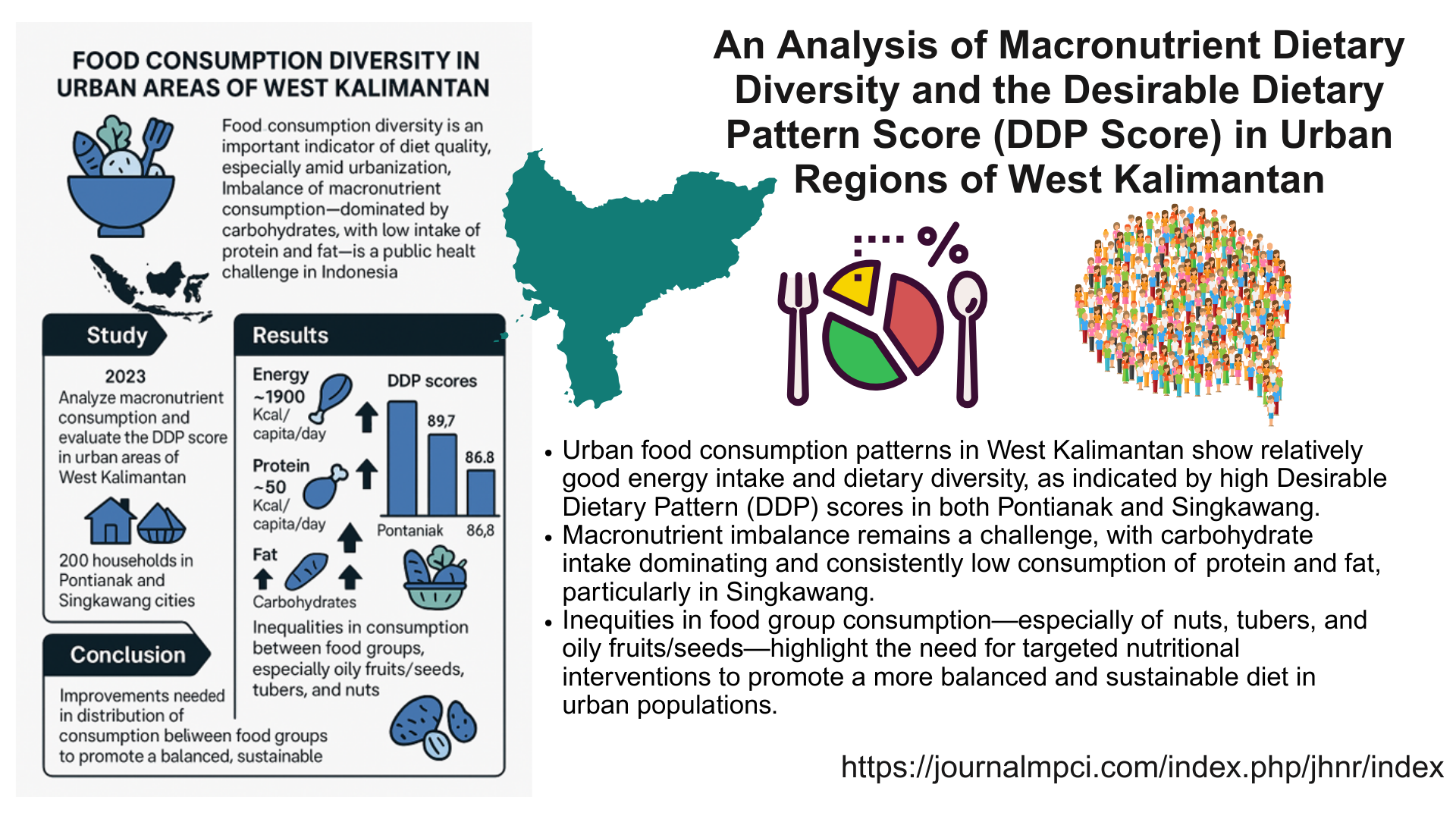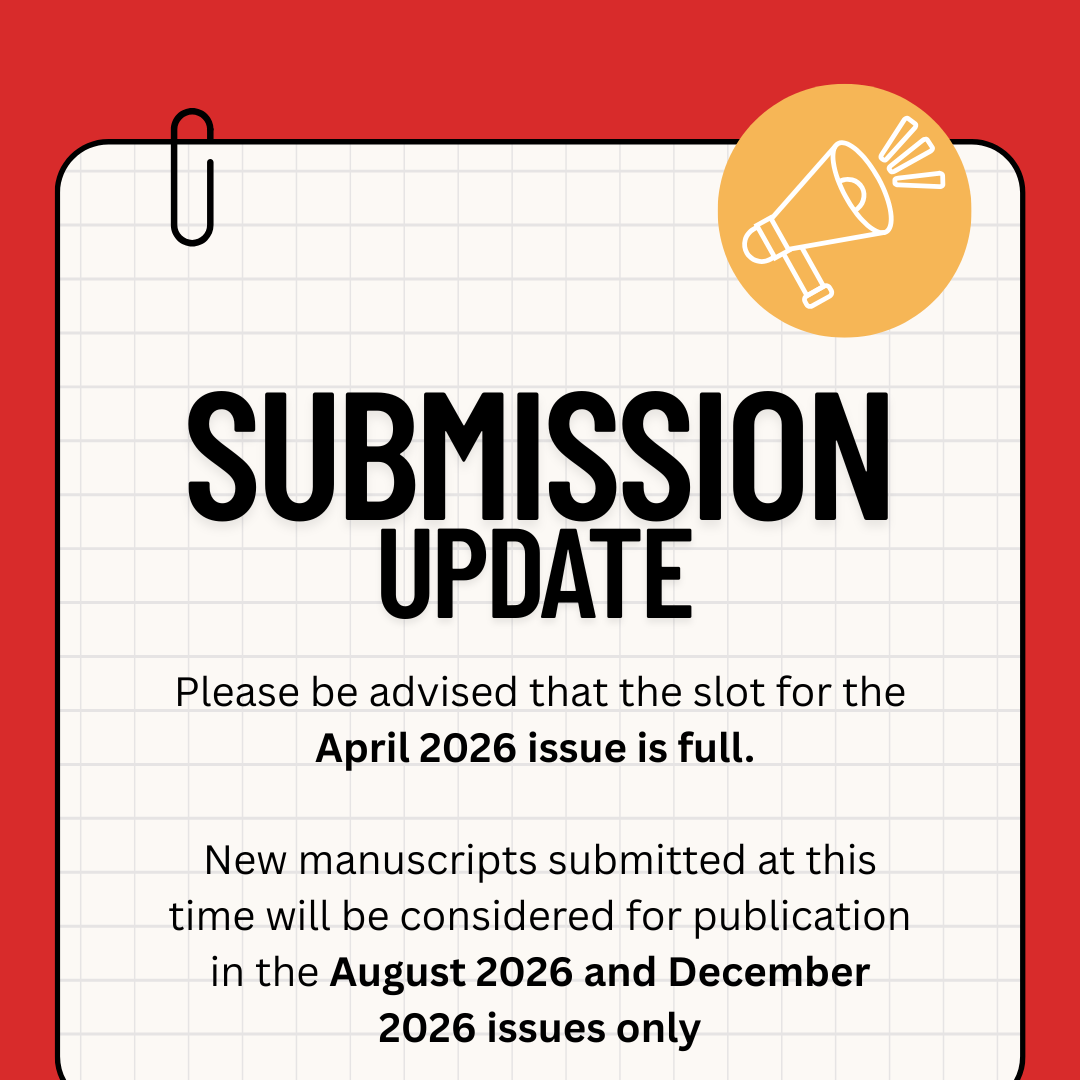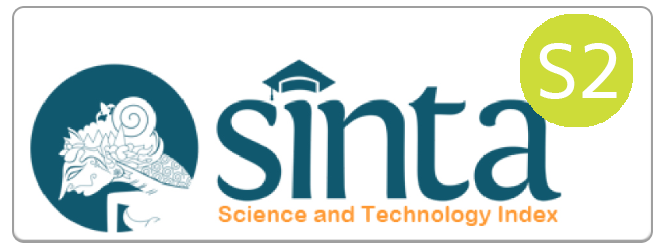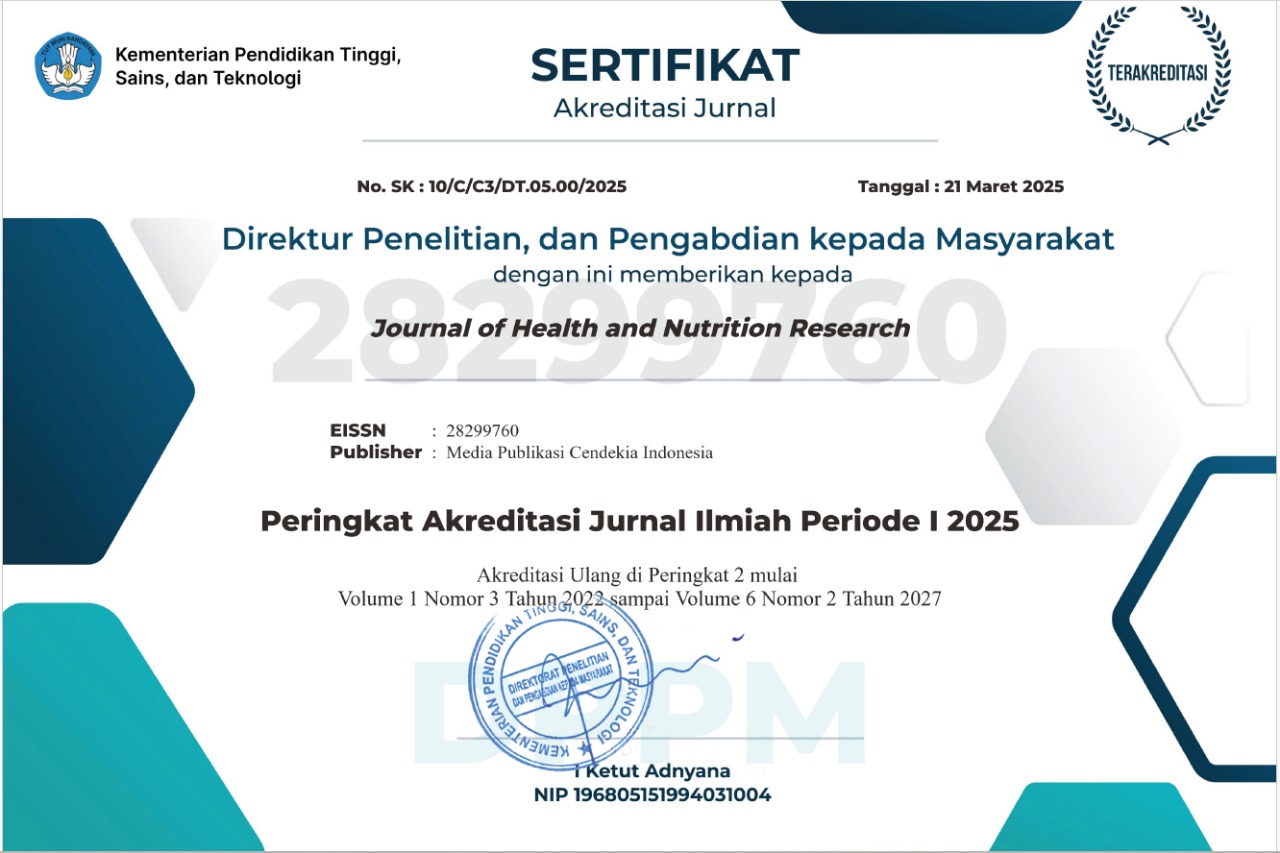An Analysis of Macronutrient Dietary Diversity and the Desirable Dietary Pattern Score (DDP Score) in Urban Regions of West Kalimantan
Keywords:
Food consumption diversity, Macronutrient Intake, Desirable Dietary Pattern (DDP), Urban NutritionAbstract
Food consumption diversity is an important indicator for assessing the quality of people's diets, especially in the context of urbanization, which affects preferences and access to different types of food. The imbalance of macronutrient consumption, such as the dominance of carbohydrates and low intake of protein and fat, is a public health challenge in Indonesia, including the West Kalimantan region. This study aimed to analyze macronutrient consumption and evaluate the Desirable Dietary Pattern (DDP) score of people in urban areas of West Kalimantan in 2023. This study used a descriptive quantitative approach involving 200 households in Pontianak and Singkawang cities. Data were collected through a food consumption survey and analyzed based on the average consumption of energy, protein, fat, and carbohydrates, as well as the DDP score. The results showed that the average energy and protein consumption in both cities were relatively similar, at approximately 1900 Kcal and 50 Kcal/capita/day, respectively. However, there were significant differences in fat and carbohydrate consumption, with Pontianak recording higher values. The DDP scores were good, at 89.7 in Pontianak and 86.8 in Singkawang. However, there are still inequalities in consumption between food groups, especially the low consumption of oily fruits/seeds, tubers, and nuts. In conclusion, although the energy consumption and food diversity of the community are relatively good, improvements are needed in the distribution of consumption between food groups to support a more balanced and sustainable diet for the community.
Downloads
References
Bhanbhro S, Kamal T, Diyo RW, Lipoeto NI, Soltani H. Factors affecting maternal nutrition and health: A qualitative study in a matrilineal community in Indonesia. PLOS ONE. 16 Juni 2020;15(6):e0234545.
Bykowska-Derda A, Czlapka-Matyasik M, Kaluzna M, Ruchala M, Ziemnicka K. Diet quality scores in relation to fatness and nutritional knowledge in women with polycystic ovary syndrome: case–control study. Public Health Nutr. Agustus 2021;24(11):3389–98.
Mediratta S, Ghosh S, Mathur P. Intake of ultra-processed food, dietary diversity and the risk of nutritional inadequacy among adults in India. Public Health Nutr. Desember 2023;26(12):2849–58.
Marushka L, Batal M, Tikhonov C, Sadik T, Schwartz H, Ing A, dkk. Importance of fish for food and nutrition security among First Nations in Canada. Can J Public Health. 1 Juni 2021;112(1):64–80.
Akhter KT, Shozib HB, Islam MH, Sarwar S, Islam MM, Akanda MR, dkk. Variations in the Major Nutrient Composition of Dominant High-Yield Varieties (HYVs) in Parboiled and Polished Rice of Bangladesh. Foods. Januari 2023;12(21):3997.
Mejía-Guzmán JE, Belmont-Hernández RA, Chávez-Tapia NC, Uribe M, Nuño-Lámbarri N. Metabolic-Dysfunction-Associated Steatotic Liver Disease: Molecular Mechanisms, Clinical Implications, and Emerging Therapeutic Strategies. Int J Mol Sci. Januari 2025;26(7):2959.
Zhou C, Li M, Liu L, Zhao F, Cong W, Zhang F. Food Consumption and Dietary Patterns of Local Adults Living on the Tibetan Plateau: Results from 14 Countries along the Yarlung Tsangpo River. Nutrients. Juli 2021;13(7):2444.
Ayele A, Tarekegn K. The impact of urbanization expansion on agricultural land in Ethiopia: A review. Environ Socio-Econ Stud. 10 Desember 2020;8(4):73–80.
Kousar S, Ahmed F, Pervaiz A, Bojnec Š. Food Insecurity, Population Growth, Urbanization and Water Availability: The Role of Government Stability. Sustainability. Januari 2021;13(22):12336.
Barth-Jaeggi T, Speich C, Havugimana C, Bayisenge F, Kimenju S, Omondi W, dkk. Nutrition transition, double burden of malnutrition, and urbanization patterns in secondary cities of Bangladesh, Kenya and Rwanda. BMC Nutr. 4 November 2023;9(1):125.
Shinsugi C, Takimoto H. Trends in Mean Energy and Nutrient Intakes in Japanese Children and Adolescents: The National Health and Nutrition Survey, 1995–2019. Nutrients. Januari 2023;15(15):3297.
Riskesdas. Riset Kesehatan Dasar 2018. Jakarta: Badan Penelitian dan Pengembangan Kesehatan Kementerian RI; 2018.
Vissamsetti N, Simon-Collins M, Lin S, Bandyopadhyay S, Kuriyan R, Sybesma W, dkk. Local Sources of Protein in Low- and Middle-Income Countries: How to Improve the Protein Quality? Curr Dev Nutr. 1 February 2024;8. https://cdn.nutrition.org/article/S2475-2991(23)26633-0/fulltext
Vo HVT, Nguyen YT, Kim N, Lee HJ. Vitamin A, D, E, and K as Matrix Metalloproteinase-2/9 Regulators That Affect Expression and Enzymatic Activity. Int J Mol Sci. Januari 2023;24(23):17038.
Cho YA, Choi JH. Association between Carbohydrate Intake and the Prevalence of Metabolic Syndrome in Korean Women. Nutrients. September 2021;13(9):3098.
Alemayehu GF, Forsido SF, Tola YB, Amare E. Nutritional and Phytochemical Composition and Associated Health Benefits of Oat (Avena sativa) Grains and Oat-Based Fermented Food Products. Sci World J. 2023;2023(1):2730175.
Atasa D, Laily DW, Wijayanti PD. Dinamika Ketersediaan Pangan dan Alih Fungsi Lahan Pertanian Kota Malang. J Agrinika J Agroteknologi Dan Agribisnis. 29 Maret 2022;6(1):10–22.

Published
How to Cite
Issue
Section
Copyright (c) 2025 Dzul Fadly

This work is licensed under a Creative Commons Attribution-NonCommercial-ShareAlike 4.0 International License.
Most read articles by the same author(s)
- Supermanto Supermanto, Suko Priyono, Sulvi Purwayantie, Nur Endah Saputri, Dzul Fadly, Dwi Ayuni, Study of The Temperature and Timing Roasting of Black Glutinous Rice and Robusta Beans on The Quality of Coffee Powder , Journal of Health and Nutrition Research: Vol. 1 No. 2 (2022)
- Sulvi Purwayantie, Dzul Fadly, Sholahuddin, Nur Endah Saputri, Sri Wijanarti, Antioxidant Activity From Multiple Extraction Of Kratom Leaf (Mitragyna speciosa) Without Veins With Sonicator-Type Bath , Journal of Health and Nutrition Research: Vol. 1 No. 3 (2022)
- Dzul Fadly, Association Between Household Income and Fruit-Vegetable Expenditure and the Intake of Vitamins and Minerals in Pontianak City , Journal of Health and Nutrition Research: Vol. 3 No. 3 (2024)
- Dzul Fadly, Water Intake, Hydration Status, and Physiological Fluid Requirements among Universitas Tanjungpura Students during Equatorial Solar Culmination in Pontianak, Indonesia , Journal of Health and Nutrition Research: Vol. 4 No. 3 (2025)


















